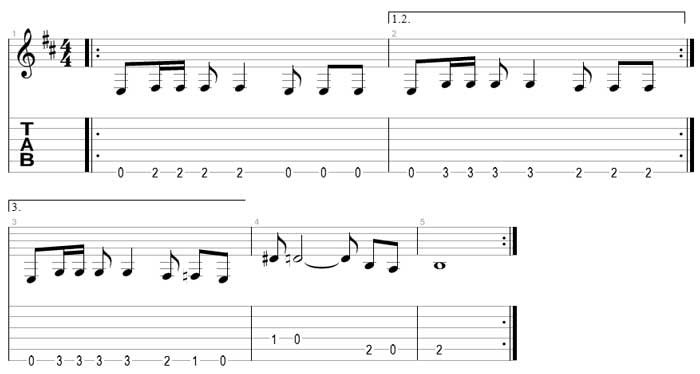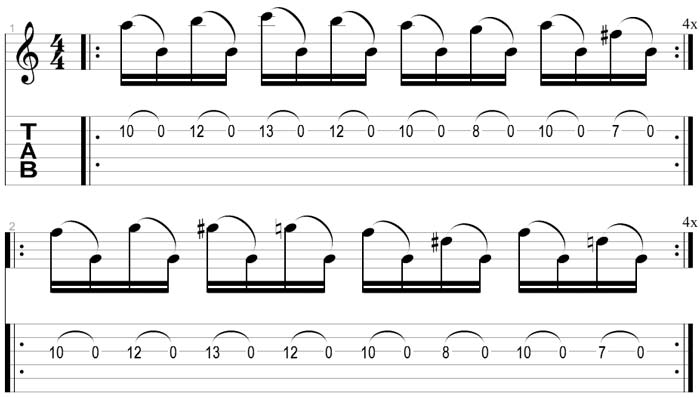This lick really isn’t a ‘lick’ – it’s more of a template you can use to create your own licks. Look closely at the lick and you will see that it’s simply a three note repeating pattern with the bass note moving up a scale. The idea behind this lick is to improvise with the bass notes to create your own interesting licks. The whole idea is to get a Spanish sound in your playing.
The scale used – Phrygian Dominant
The bass notes move up a scale but you will probably notice there is quite a jump from the first fret F to the fourth fret G#. We don’t see this type of jump in our standard Major scale. This type of scale is actually the Phrygian Dominant mode. Don’t let the name scare you off – just think of it as any other scale. The only difference is the intervals used. This lick uses E Phrygian Dominant to help you achieve a Spanish sound. Many Flamenco guitarists use the Phrygian Dominant mode to achieve this sound as well as the Phrygian mode.
Improvising using this lick
Start off by practing the lick as shown. Get used to playing the three note pattern. You need to play this with your fingers in this order – thumb, index, middle. Alternatively you could play it – thumb, middle, ring. The choice is yours. Play it over and over again with a metronome and build up the tempo until you can play it easily at a high pace. Once you can play it as shown, practice moving backwards down the scale. Then practice going up and down the scale. Once you memorize the notes used and can easily move up and down then you can start improvising.
The unique thing about this mode is the jump you can see from F to G#. If you focus your improvisation around these two notes you will bring out the exotic flavour of the mode. So you could start your improvisation by playing E, then F, G#, F G#, A etc. Play around with moving back and forth between the notes, repeating the same notes and jumping past notes.
Here’s a few ideas you can use to improvise using this lick:
- Slide between the notes
- Add vibrato to the bass notes
- Change the tempo as you play (speed up or slow down)
- Use hammer-ons or trills on the bass notes
- Continue the scale past the notes shown (try to figure out the notes all over the fretboard)
- Add in some chords that fit the scale (eg: E Major)
If you can spend a lot of time simply improvising with this basic lick, you will find your ability to come up with new creative ideas will improve. The point of this simple exercise is to help you learn to create your own interesting licks. After you master this lick, try using a different scale or mode.
















